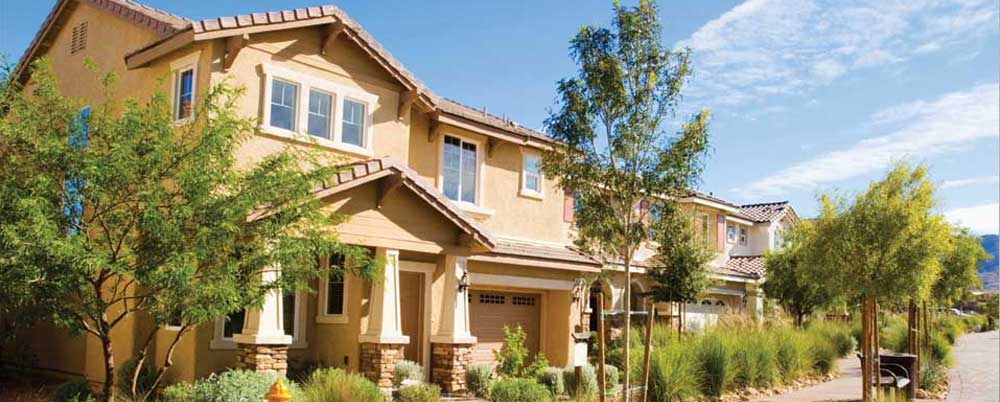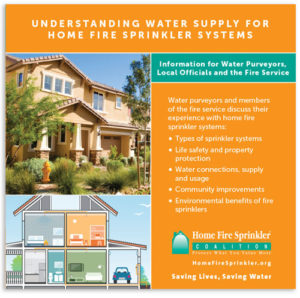Resources for Water Purveyors

Understanding Water Supply for Home Fire Sprinkler Systems
Information for Water Purveyors, Local Officials and the Fire Service
- Types of sprinkler layouts
- Water connections and supply
- Water usage
- Environmental benefits
 This guide:
This guide:
- Clears up confusion about home fire sprinklers
- Describes fire sprinkler technology and life safety
- Shows how sprinklers prevent deadly flashover
- Explains how fire sprinklers work
- Outlines the national standard, NFPA 13D, and its requirements
- Provides an overview of water connections, flow and usage
- Discusses the design of stand-alone and multipurpose layouts commonly used in homes
- Addresses both public and private water supply
- Details the environmental benefits of fire sprinklers
Download a pdf of this brochure
Order the FREE DVD
Home Fire Sprinklers – Good for Communities
Fire sprinklers have been saving lives and protecting property for more than 100 years. Home fire sprinklers and commercial sprinklers are similar because they both respond quickly to a fire. Yet there are significant differences, and water supply is chief among them.
Fire sprinklers offer the ultimate fire protection for homes, where people are at greatest risk of fire injury and death.
Sprinklers make up for human error. And they operate automatically, even if residents are asleep when a fire starts.
Sprinklers react while the fire is still small, controlling the flames and smoke with 90% less water than the fire service would use if sprinklers weren’t installed. They reduce fire damage by 97% and reduce greenhouse gas emissions by 98%. Sprinklers also reduce wastewater pollution. (FM Global)
Fire sprinklers improve community infrastructure and protect residents and firefighters for generations to come.
Eight out of every 10 structure fire deaths happen at home. Fire sprinklers provide fast and automatic protection that prevents injuries and saves the lives of residents as well as firefighters. Sprinklers also protect property.
- Sprinklers are connected along a network of piping, typically hidden behind walls and ceilings.
- Each sprinkler operates individually – they do not flow water all at once.
- Sprinklers operate in response to the high heat of a fire, not to smoke or smoke alarm activation.
In the majority of home fires, only one sprinkler controls the blaze. In this video: Water purveyors and members of the fire service discuss their experience with home fire sprinklers:
- Life safety and property protection
- Water connections, supply and usage
- Community improvements
- Environmental benefits of fire sprinklers

